

“Why do we have to learn this?”
If you’ve heard that question from your students lately, especially during math, you’re not alone.
Math can feel abstract, disconnected, and even intimidating for elementary students. But often, it’s not the math that’s the problem—it’s the delivery.
Kai XR is changing that.
We combine core academic skills like numeracy, geometry, and operations with immersive, interactive tools that make learning feel real. Using our metaverse makerspace, students apply math concepts by building, designing, and solving real-world problems. And all from a browser-based platform that requires no fancy hardware.
And the best part? You can try it out for free. Log in, and you’ll get access to your first 5 math adventures, free on us.
By third or fourth grade, math shifts from simple counting to more abstract concepts like fractions, division, and patterns. That’s where many students hit a wall. These topics require spatial reasoning, logical thinking, and the ability to visualize relationships, skills that aren't always built through traditional teaching methods.
📉 According to the National Center for Education Statistics, only 40% of fourth graders score proficient or above in math. And math anxiety? It often begins by age 7.
The problem isn’t the content, it’s the delivery. Worksheets, lectures, and textbook problems rarely connect math to students' real lives. Without that relevance, concepts feel random, confidence drops, and gaps widen.

But when students engage with math in active, visual, and hands-on ways, their understanding and interest grow. Studies show that students using manipulatives and visual models consistently score 15–20% higher on assessments. Immersive environments can boost retention by up to 4x compared to traditional methods. (PwC, 2020)
Kai XR is built to make math meaningful.
We take core academic concepts like multiplication, fractions, and division, and bring them to life in a 3D, browser-based makerspace where students can build, move, and create using virtual manipulatives. Whether they’re dividing carrots for a feast, coloring pie charts, or creating patterns under the sea, they’re doing the math, not just watching it.

Teachers get access to pre-made, standards-aligned lessons, real-time student tracking, and Clever or ClassLink integration for easy onboarding. No VR headsets. No complicated tech. Just immediate, immersive learning that helps students finally see the math.

This is what makes math feel real. When I explain division on the board, it doesn’t always click. But through Kai XR, students could see it, touch it, and truly understand it.”
Mr. Dunn, I3 Academy Elementary Teacher of the Year
Kai XR turns confusion into clarity and helps kids understand math deeply and confidently.
These free math activities for elementary students use Kai XR’s metaverse makerspace and drag-and-drop manipulatives to deepen understanding and boost engagement. Perfect for grades 3–5, each adventure connects academic content to real-world thinking.
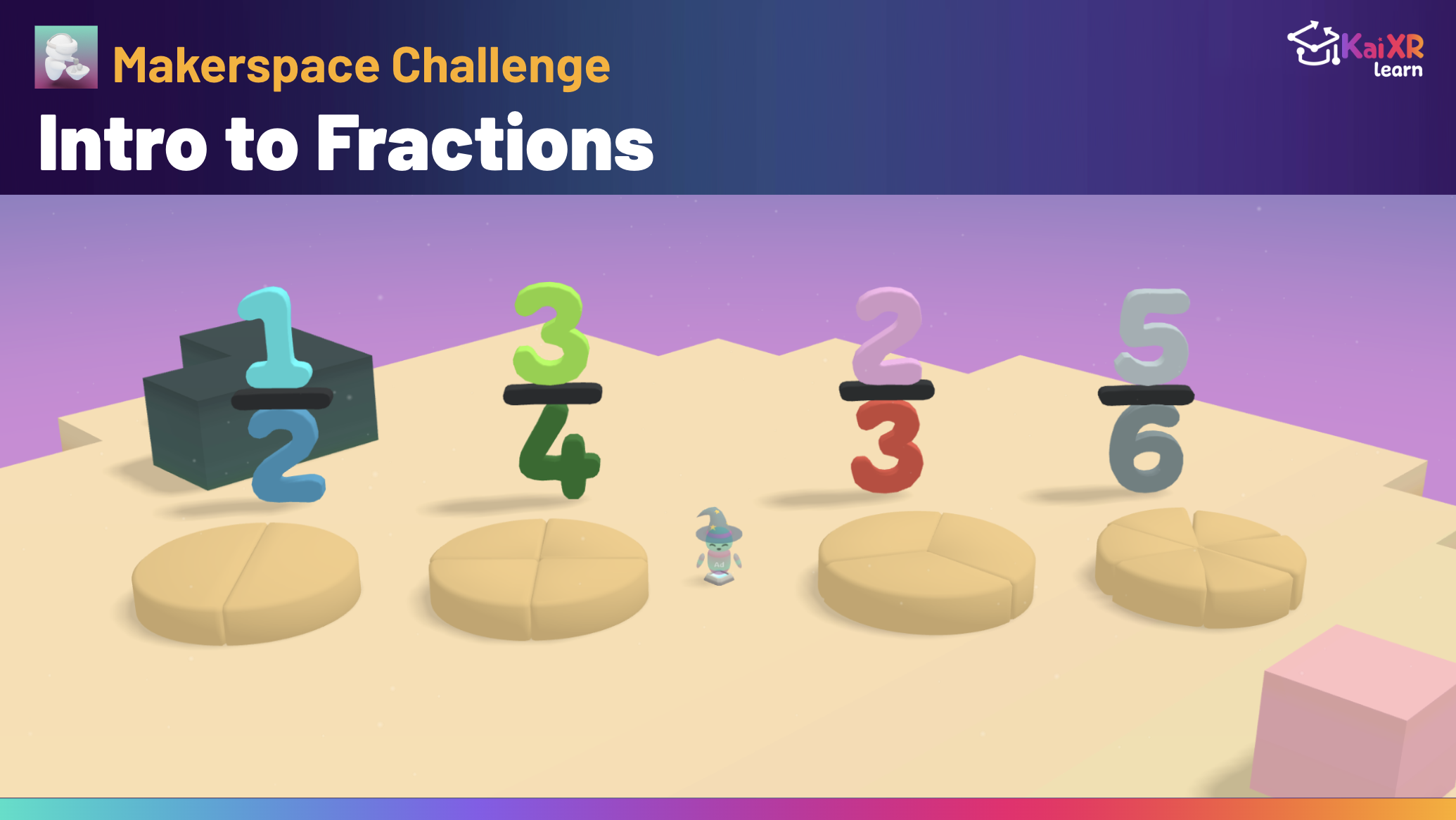
Grade Level: 3
Skill Focus: Understanding parts of a whole, equivalent fractions
Standard: CCSS.Math.Content.3.NF.A.1
Fractions are one of the most foundational yet misunderstood concepts in elementary math. Learning how to divide a whole into parts builds number sense, supports algebra readiness, and even strengthens proportional reasoning used in real-life tasks like cooking, budgeting, and measuring.
In this activity, students enter a virtual makerspace and color pie pieces to match given fractions. This hands-on manipulation builds fraction fluency, helping students understand what 1/2 or 3/4 actually looks like.
According to a study published in the Journal of Educational Psychology, students who used visual fraction models showed significantly higher understanding and retention than those who relied on numbers alone.
Why it works: This activity gives students a clear, interactive way to visualize parts of a whole. It builds both procedural and conceptual understanding of fractions, without needing physical tools.
Try the Adventure without logging in!
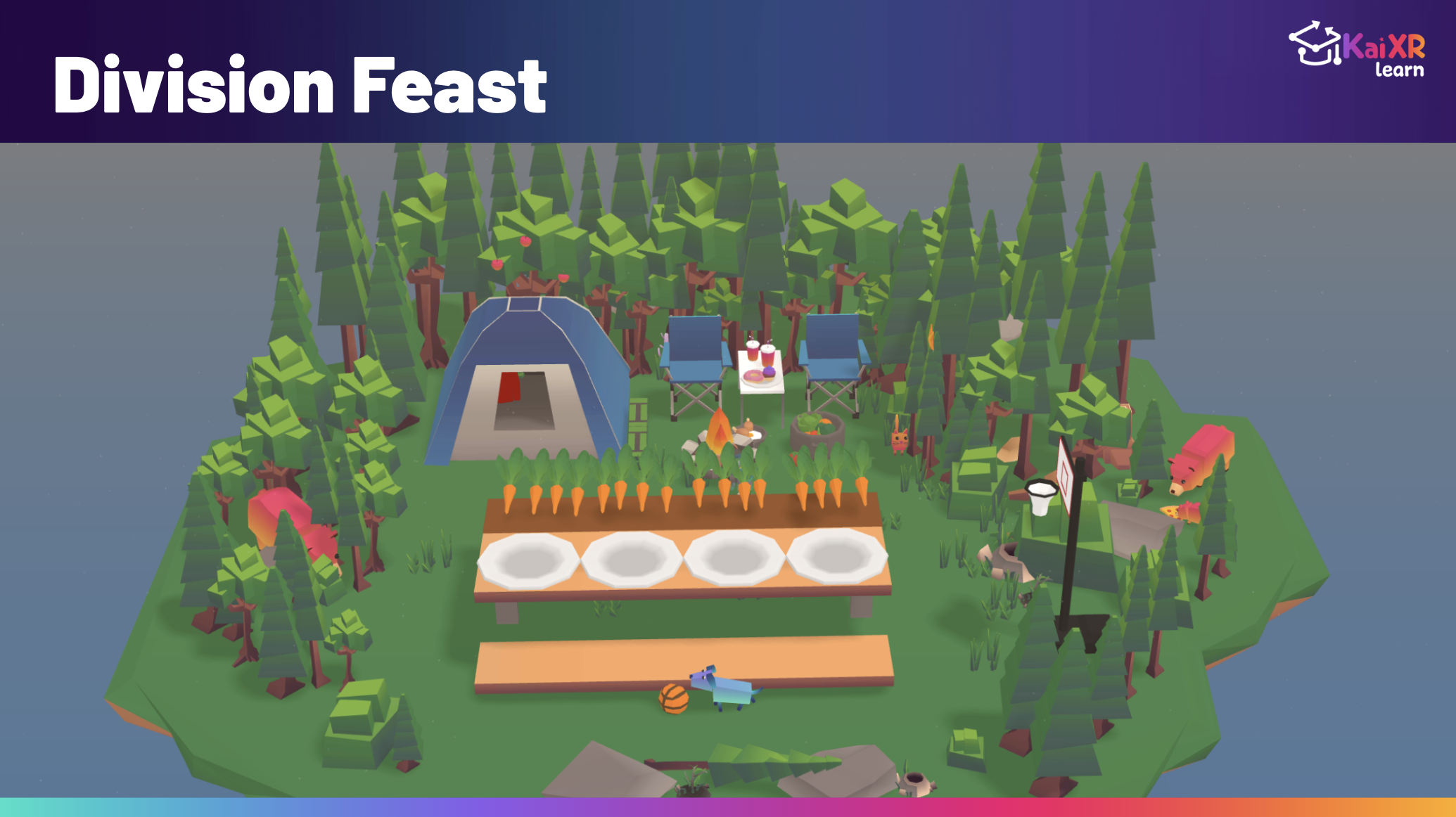
Grade Level: 3–4
Skill Focus: Division as equal sharing, grouping
Standard: CCSS.Math.Content.3.OA.A.2
Division can be difficult for young learners because it’s abstract and often introduced with static word problems. Yet understanding division is essential for success in multi-step problems, fractions, and ratios.
In Division Feast, students help Mr. Bear divide 16 carrots onto 4 plates using virtual manipulatives. They physically group items to represent equal shares and make sense of what division means.
Research from Stanford University found that students develop deeper number sense when they use manipulatives to physically represent math problems. It allows them to test, revise, and see cause-and-effect in real time.
Why it works: Students aren't just solving a problem, they’re acting it out. This reinforces the logic behind division and shows how it connects to multiplication in a way that sticks.
Try the Adventure without logging in!
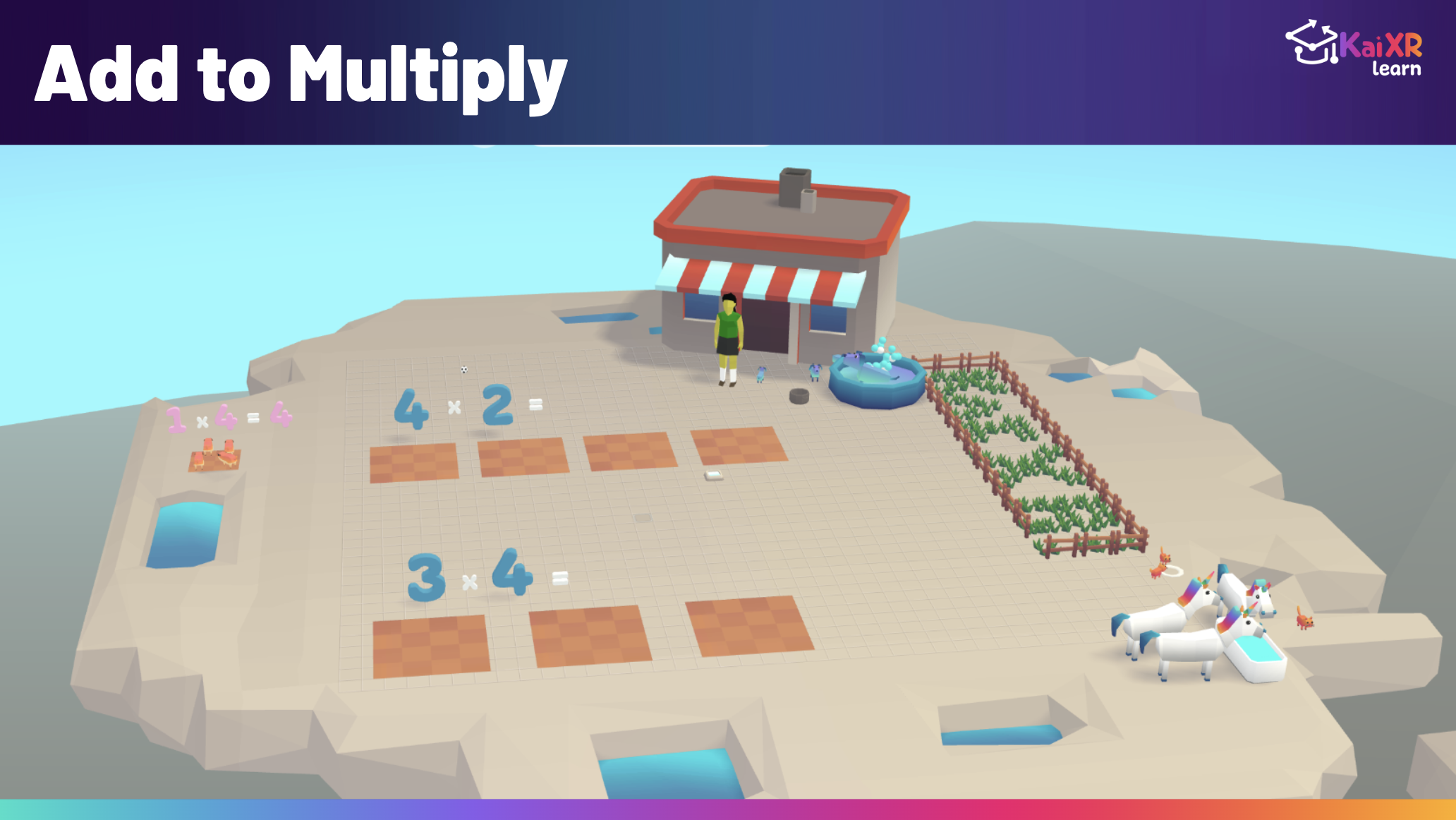
Grade Level: 3
Skill Focus: Repeated addition, building multiplication foundations
Standard: CCSS.Math.Content.3.OA.A.1
Multiplication is often memorized before it’s understood. But research shows that students who understand multiplication as repeated addition are more likely to retain facts and apply them in problem-solving.
In this lesson, students help Sally organize animals by using repeated addition to solve multiplication sentences. For example, they visualize 3 × 4 as three groups of four, using 3D tiles in a virtual spa setting.
A study by the National Council of Teachers of Mathematics emphasized the importance of visual groupings and arrays for teaching multiplication concepts to young learners.
Why it works: This activity shows students the why behind multiplication. By building it themselves, students form a concrete understanding that supports future learning.
Try the Adventure without logging in!
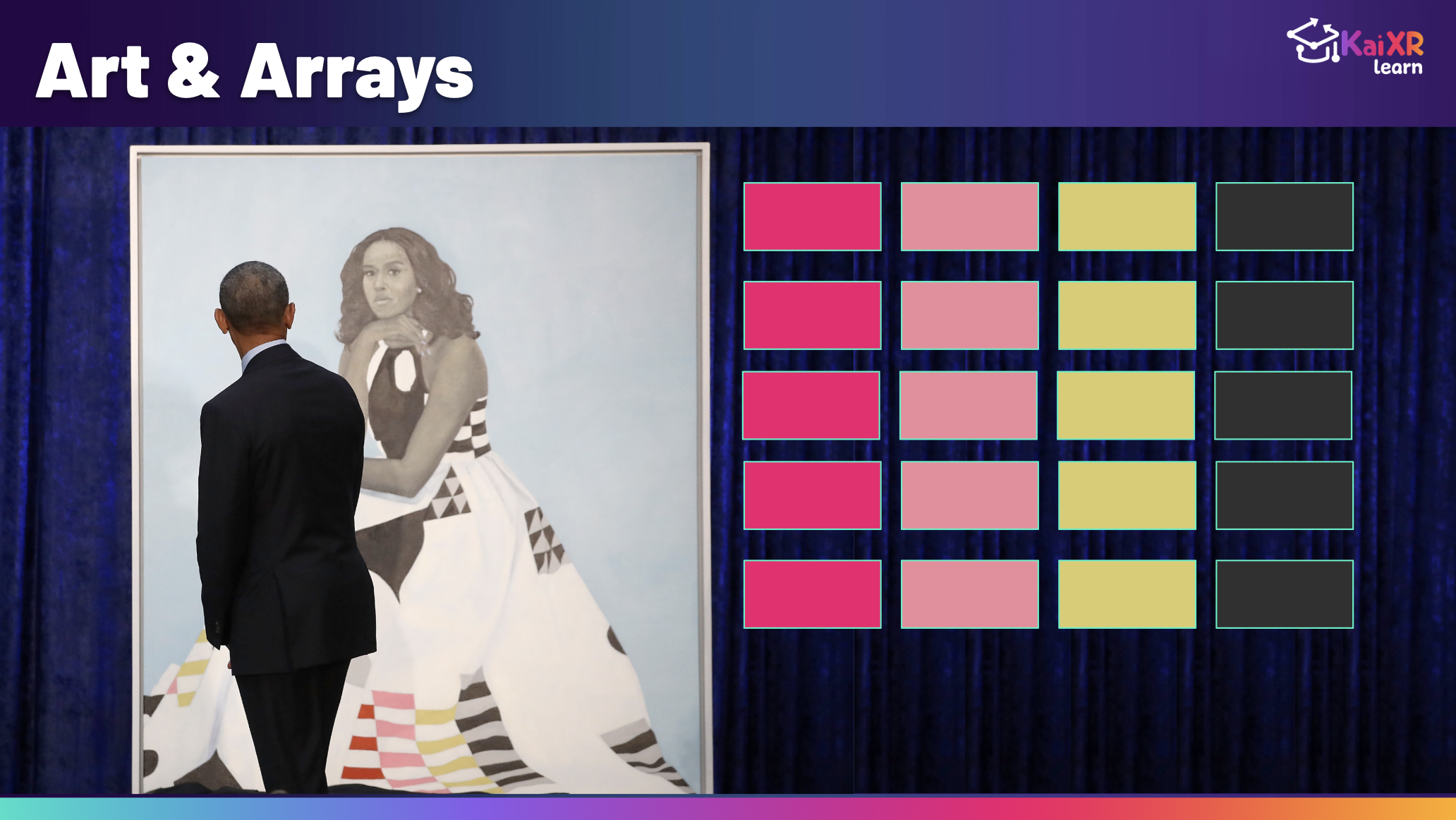
Grade Level: 3
Skill Focus: Arrays, multiplication, pattern recognition
Connections: Math + Art + Culture
Art & Arrays brings together math, creativity, and cultural relevance. Students visit the Smithsonian’s National Portrait Gallery to view Amy Sherald’s iconic portrait of Michelle Obama, then use patterns on her dress to solve real math problems.
Arrays are essential for building multiplication understanding. Students use rows and columns to explore equal groups visually and reinforce repeated addition. According to the Association of Mathematics Teacher Educators, using real-life visuals like art can improve engagement and make abstract math concepts more meaningful.
Why it works: It connects math to something students care about. They see how math appears in art, design, and culture making it relevant, visual, and memorable.
Try the Adventure without logging in!

Grade Level: 4
Skill Focus: Patterning, reasoning, logic
Standard: CCSS.Math.Content.4.OA.C.5
Patterns form the foundation for higher-level math like algebra and coding. But many students struggle to identify or extend patterns when taught through worksheets alone.
In this ocean-themed adventure, students explore underwater patterns using sea stars, coral, and submarines. They complete and create repeating sequences, building logical reasoning in a playful, low-pressure environment.
The National Mathematics Advisory Panel found that patterning is a key predictor of later math achievement, even more so than early counting or number recognition.
Why it works: Students learn through discovery. They build patterns themselves and apply what they know in creative ways, which helps deepen retention and confidence.
Try the Adventure without logging in!
Kai XR bridges the gap between academic learning and real-world relevance. Every activity combines core math instruction with 21st-century skills, including digital fluency, creativity, and problem-solving.
.png)
With Kai XR, teachers can:
And it’s all browser-based, so no extra devices or downloads are needed.
Yes, Kai XR offers engaging, hands-on numeracy activities, but that’s just one piece of the adventure.
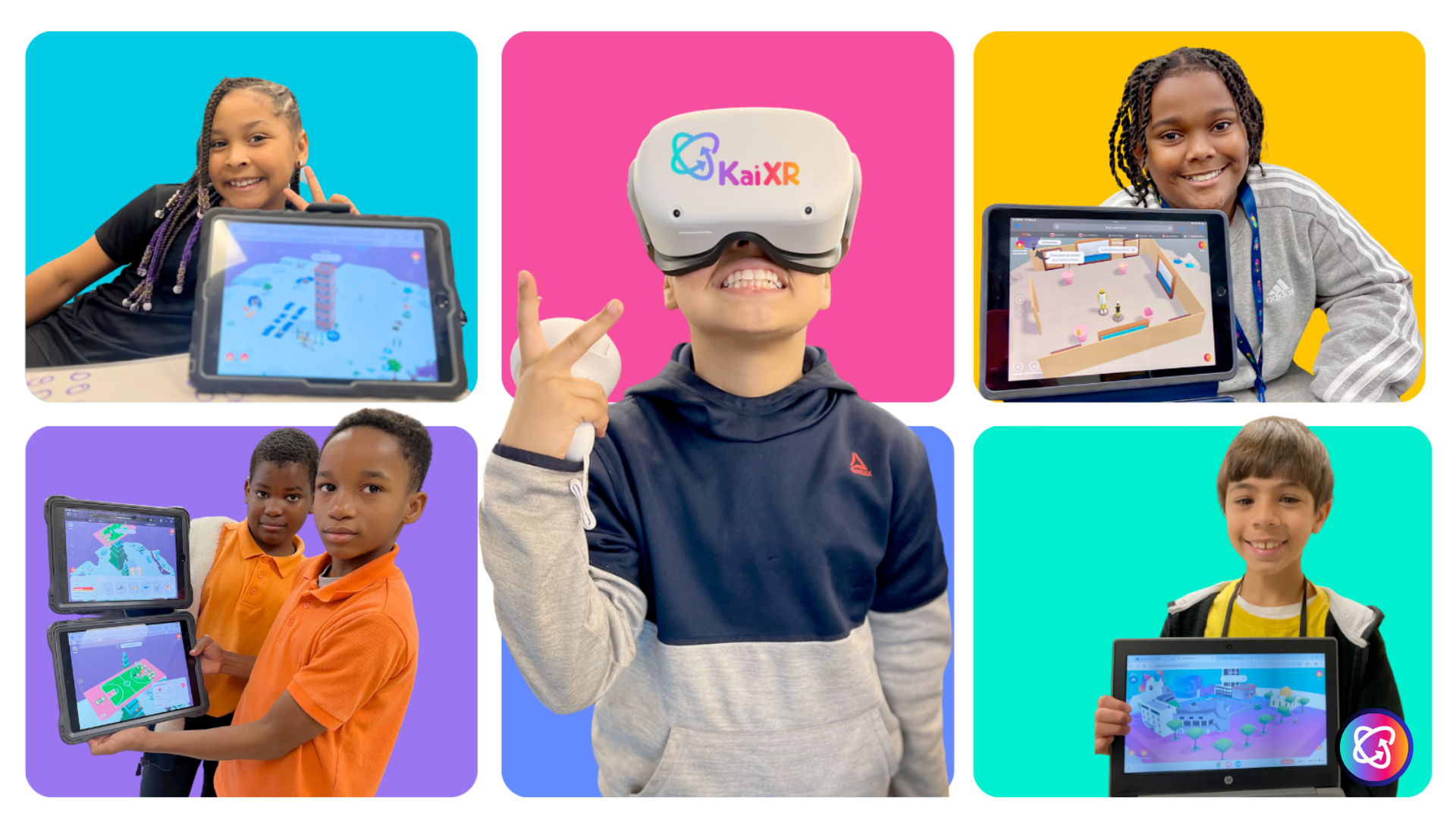
When you create a free teacher account, you unlock access to interactive learning across subjects, including ELA, science, STEM, social studies, and career exploration. From writing workshops set on Mars to science challenges about clean energy, Kai XR connects academic standards to real-world experiences that spark curiosity and build future-ready skills.
And with your teacher login, it’s not just about content, it’s about classroom control, customization, and insight.
Kai XR makes learning relevant, trackable, and fun for every subject, every student, every day.
Log in to your free teacher account and start exploring the full world of Kai XR.
There’s so much for you and your students to explore. All you need to do is start. Try out Kai XR on your smart device, tablet, VR headset, or laptop. We’ll be your guide!











